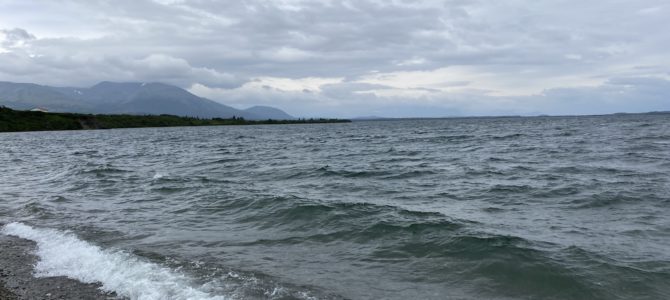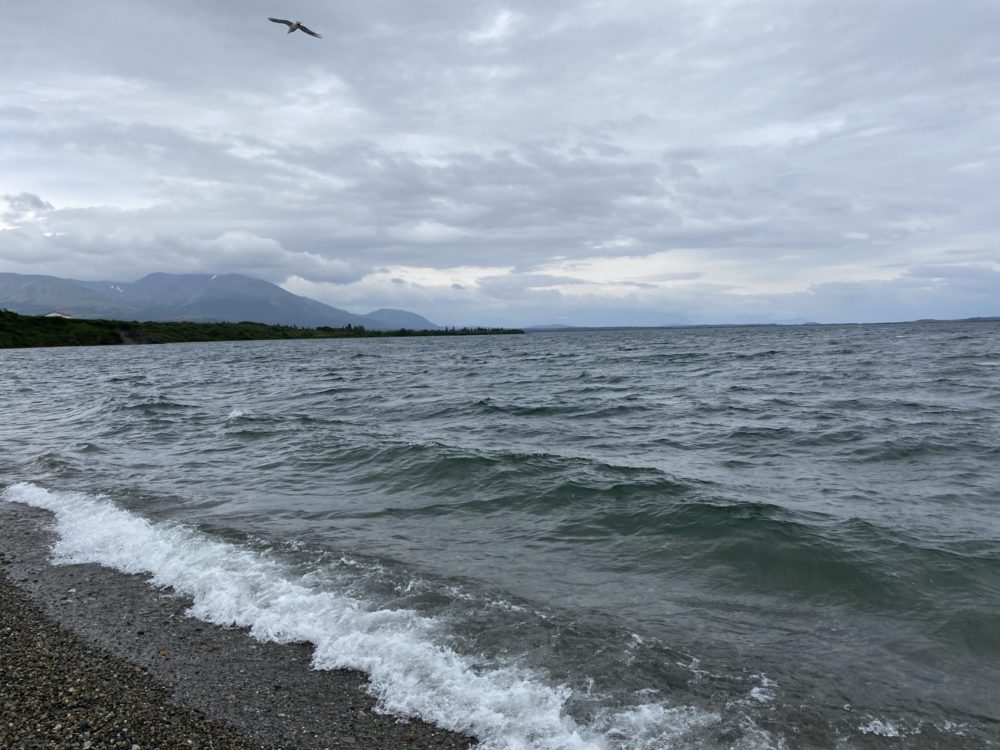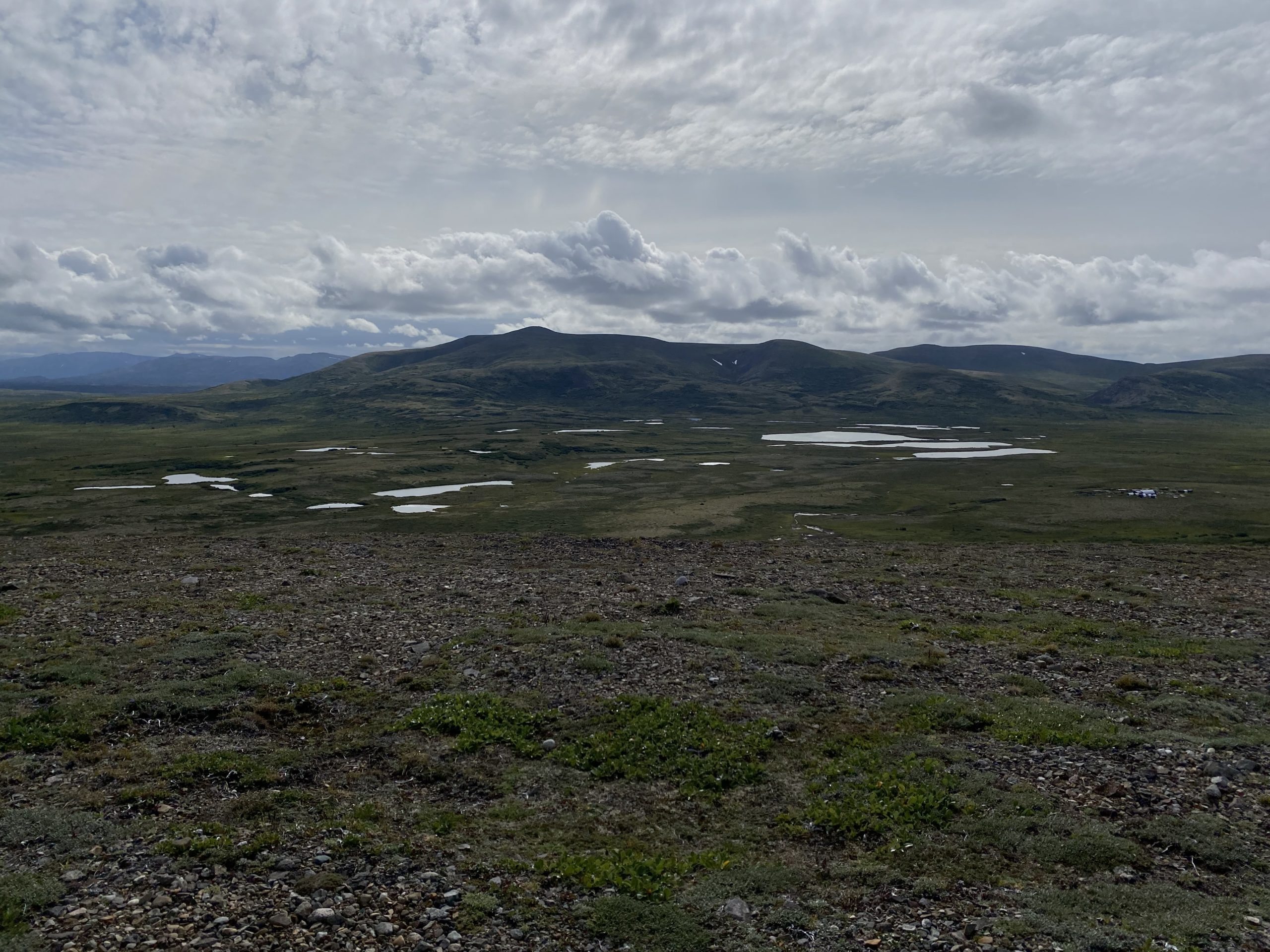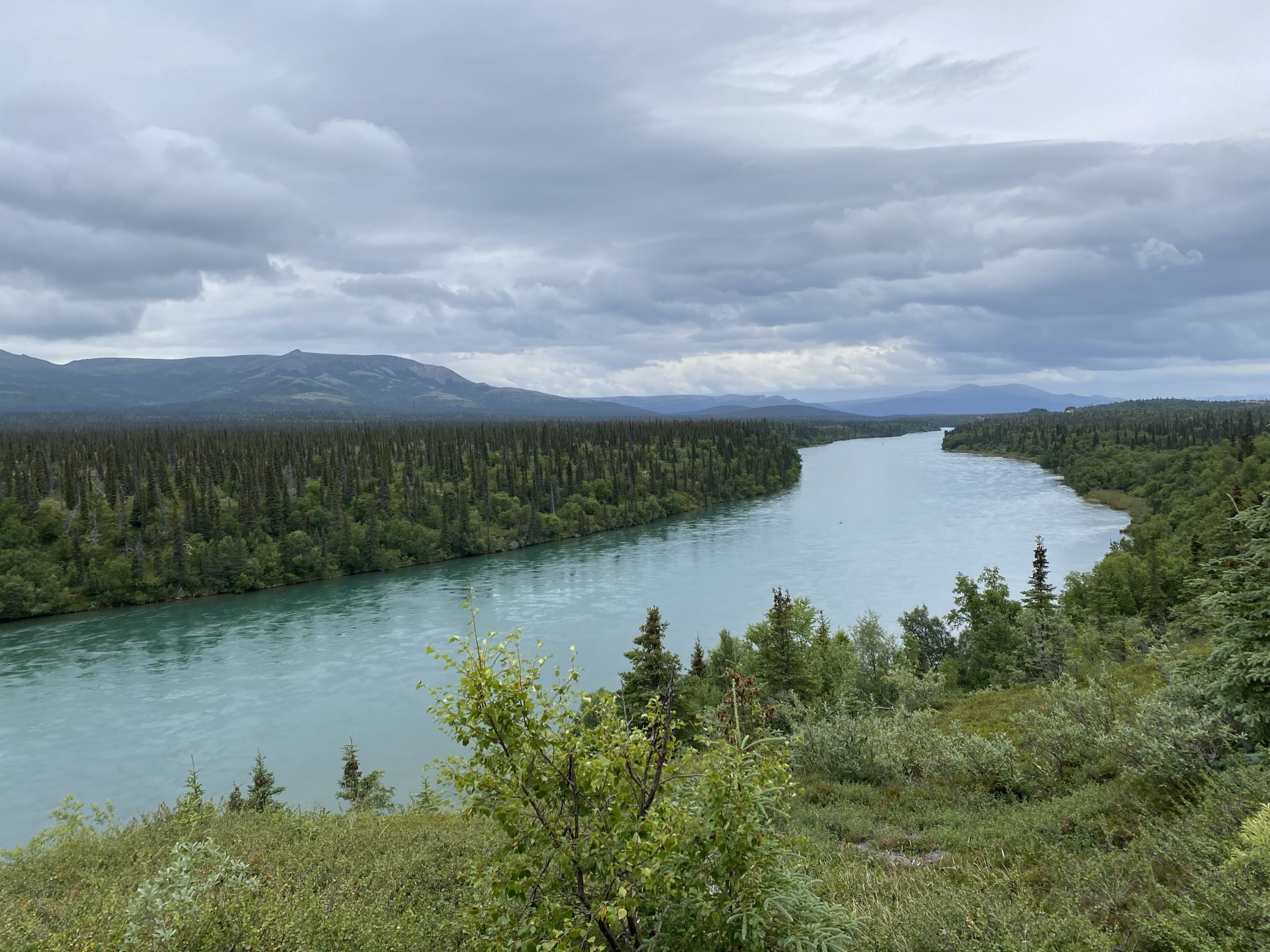
ILIAMNA, Alaska — Chasity Anelon was able to build a house in her remote hometown of Iliamna eight years ago after she began working for the company behind Pebble Mine in 2009. Had it not been for the lucrative backyard deposit of vital minerals worth between an estimated $500 billion to $1 trillion attracting prospectors, she says, her life right now would include sleeping in a bedroom in her grandmother’s residence.
“There’s just no jobs here,” Anelon said, as she toured The Federalist around her small village populated by Native Alaskans living in poverty with a view, surrounded by majestic peaks piercing the clouds as waterways pave sweeping visas 100 miles inland from the Pacific coast.

Anelon’s brother has already left, unable to find work where locals describe landing a job as akin to “winning the lottery.” He now works as a heavy equipment operator in other remote parts of the state, manning machinery 10 months out of the year between the North Slope for five, and southwest Naknek for another five on Bristol Bay, away from his family in Iliamna.
“I am very thankful I can live here and raise my daughter,” Anelon said, as one of the lucky few in the area remaining on Pebble Partnership’s payroll while the company navigates a steep uphill battle to get the local mine online. Without it, Iliamna’s future remains bleak, and so does Anelon’s prospect for local employment. Risks to one of the area’s largest industries have kept the mine’s plans at bay for decades.
Backyard Treasure Chest Locked By Activists
Northern Dynasty Minerals Ltd., the Vancouver-based parent company of Pebble Partnership, has been waging a nearly 20-year effort to harvest a massive deposit of copper, gold, porphyry, and molydenum. These minerals are vital ingredients in the production of high-tech gear and electric cars, especially as the Biden administration looks to ramp up production of cleaner vehicles reliant on material that is currently mined by foreign adversaries, primarily China.

Nearly 100 miles southwest of the proposed mine site is the world’s largest wild salmon run and largest commercial salmon fishery in Bristol Bay, a pristine ecosystem valued at more than $2 billion by the McKinley Research Group in April, $990 million of which is located in the state. The Bristol Bay salmon industry industry supports an average of 15,000 jobs every year, making it a crucial lynchpin in the Alaska economy.
McKinley, an Anchorage-based firm, opposes the Pebble Mine project, and produced its report as part of a coalition with the Bristol Bay Defense Fund, which has called for permanent federal rules that would bar the mine from ever opening. The lucrative mine’s site upstream from the world-famous salmon run has made the permitting process a high-stakes game, earning National Geographic’s declaration of the battle for permits the “Gettysburg of natural resource conflicts” in 2012.
In November, the Army Corps of Engineers nearly granted mine opponents’ wish, blocking permits for the mine’s proposed discharge plan, which was recalibrated and resubmitted in 2017 to comply with demands from the Obama administration’s Environmental Protection Agency three years prior. In 2014, the agency cited “irreversible harm” to the salmon downstream should the mine get built.
Last fall’s ruling from the Army Corps of Engineers raised similar concerns about the Alaskan salmon that flood the inland waters of southwest Alaska to spawn every summer. But the decision it handed down remained vague, denying the mine plan as “contrary to public interest” despite an Environmental Impact Statement (EIS) completed under the process outlined by the National Environmental Policy Act (NEPA), which found that the proposed mining posed virtually no threat to downstream habitats.
“Past and present actions that have or are currently affecting commercial and recreational fisheries in the analysis are minimal,” regulators wrote, highlighting that so far, there has been little harm to the surrounding ecosystem over the course of initial mining exploration. “The No Action Alternative would not contribute to cumulative effects on commercial and recreational fishing.”
In other words, the new plan presents no catastrophic risk to the salmon of Bristol Bay, according to the third-party assessment. The Army Corps of Engineers agreed in March to reconsider its project denial.
The Army was right to deny permitting, Andy Wink, the executive director of the Bristol Bay Regional Seafood Development Association (BBRSD), told The Federalist. He characterized the size of Pebble Mine in the harsh Alaskan conditions as unprecedented and lacking an acceptable plan for waste disposal.
On the other hand, at Red Dog Mine, a zinc and lead operation in northwest Alaska, previously uninhabitable streams through natural pollution came to support a “viable aquatic community” after regulations imposed by mining activity cleaned the water, according to a 2005 study. Asked about Red Dog’s experience, Wink said the scale of operations at Red Dog didn’t compare to the plans at Pebble Mine, which, if opened, would be the largest mine in North America.
“We’re talking about much smaller runs, much smaller numbers of salmon there,” Wink told The Federalist. “It’s a goldilocks thing. Salmon need water that’s not too hot and not too cold.” And Bristol Bay, is a “biological treasure,” which produced its largest run on record this summer with more than 63 million fish returning to bay.
Locals Frustrated By Inability to Develop
At the height of Pebble Partnership’s initial operations, where the company surveyed the site and prepared for the permitting process, residents in Iliamna and neighboring Newhalen were hopeful about the future of their communities, with locals earning paychecks and new infrastructure on the horizon.
Stark opposition the mine however, both in Alaska from the commercial fishing industry and in the Lower 48 from progressive environmental interests, has remained a focus of anxiety for residents of Iliamna and Newhalen after the Army Corps of Engineers blocked the mine’s permit last fall. Among the reasons buried in the Army’s decision last year to deny the mine a green light was the potential erasure of what some Alaska Native communities call “sharing,” or a traditional subsistence way of life.
Sharing is an important aspect of community cohesion, and if high-harvesting members of the community find project-related employment and have less time for subsistence activities, the rest of the community and households in other communities could end up receiving less wild food through sharing and trading relationships. Increased employment of adults in the communities could impede the amount of time spent teaching young people to hunt, fish, gather, process, and preserve subsistence resources which would impact the amount and quality of traditional knowledge passed on to younger generations, potentially resulting in a long-term or permanent adverse effect to communities.
But some Iliamna residents saw the reference to “sharing” and traditional Native life as an attempt to exploit neighboring tribal opposition to the mine. Lisa Reimers, the CEO of Iliamna Development Corp., called the note prejudiced.
“Just because a local Native person gets a job, doesn’t mean that they completely abandon their subsistence way of life or stop sharing,” Reimers told The Federalist. “If a local person finds project-related employment, this means that they are working and living in the community/region that they are from.”
Anelon’s brother, who left Iliamna to find work elsewhere, Reimers said, exemplified the kind of threat Reimers’ father, a tribal chief and small business owner, had always feared.
“The greatest threat to our culture was younger people leaving the community in search of economic opportunities elsewhere,” Reimers said.
Anelon put it more succinctly: “We’re living in poverty and being told it’s tradition,” she said, her bright charisma evaporating as she spoke.
But according to Wink, Pebble Mine’s benefits are “incremental” compared to the incumbent commercial salmon fishing industry, which he notes is built on downstream natural resources (salmon) that are already supporting thousands more jobs than the mine would bring to Iliamna.
“One thing that’s really important to understand is Bristol Bay is not just another Alaska salmon fishery, it’s the salmon fishery,” Wink said, home to more than 50 percent of Alaska’s commercial salmon harvest. “It’s created sustainable jobs and economic opportunities literally for generations. There’s many, many fishermen in the fleet that are second, or third, or fourth generation fishermen. That’s something to be very careful with.”
Iliamna’s Experience Is Common Across Rural Alaska
In Iliamna, basic goods are expensive because everything has to be flown in from Anchorage. A walk through the town’s general store reveals few fresh fruits, laundry detergent at triple the Anchorage price, and a bundle of diapers priced at more than $70 a box.

Residents are frustrated by the demands of monolithic development, forced to rely on a single source of revenue from elite tourism and the commercial fishing industry while mining out on the infrastructure jobs the mine would offer. Iliamna is a remote destination not just far off the beaten path, but completely off the beaten path, and therefore expensive to access and usually visited only by society’s most affluent.

The frustration of Iliamna residents is shared by Alaska Republican Gov. Mike Dunleavy, who hailed Pebble Mine as the most egregious illustration of interference in Alaskan development from “the Lower 48.”
There’s a “trillion-dollar opportunity right next to the poorest people in America, and we can’t do anything about it,” Dunleavy told The Federalist. “That place is dying out there in Iliamna. They’re drowning in opportunity [but] they’re denied that opportunity.”
Worse, Dunleavy said, that this experience is familiar to rural Alaskans across the state: barred from developing their own natural resources for the sake of preserving nearly a fifth of the nation’s entire land mass as a pristine park for wealthy tourists who would maybe like to visit one day.
The Iñupiat living on the North Slope are among those most able to empathize with the residents of Iliamna. Their pleas to drill for oil and natural gas in a small, flat portion of the Arctic National Wildlife Refuge (ANWR) have been impeded by Big Green interests exploiting rival opposition from another tribe hundreds of miles south. The Gwich’in, far removed from the area inhabited by the Iñupiat, have partnered with left-wing environmentalist groups to frame the crusade against drilling as one of environmental justice after the tribe sought to lease their own lands for oil and gas exploration, which turned up empty.
“If we were able to do what we wanted to do, we’d be one of the richest states by far,” Dunleavy said. He argues that rural communities are being prevented from developing their natural resrouces by federal authorities and Big Green progressives, which want them to maintain a subsistence lifestyle plagued by poverty, addiction, and third-world diseases. Bristol Bay’s commercial fishermen counter that their industry, which supports more Alaskans than the mine would, shouldn’t be sacrificed to benefit a few small communities.
The fight over Pebble Mine also stands out for its absence of clear-cut political battle lines as seen in the ANWR fight, where oil and gas leases now appear to depend on the political party in power in Washington. The state’s two senators, both Republicans, oppose Pebble Mine. Last summer, Donald Trump Jr., tweeted his opposition to the mine. Shortly after, Fox News’ Tucker Carlson, ran a segment against it.
Decades after the discovery of precious mineral and metals, the mine’s prospects remain uncertain, while the salmon continue to thrive as a biological wonder.









